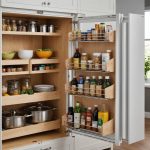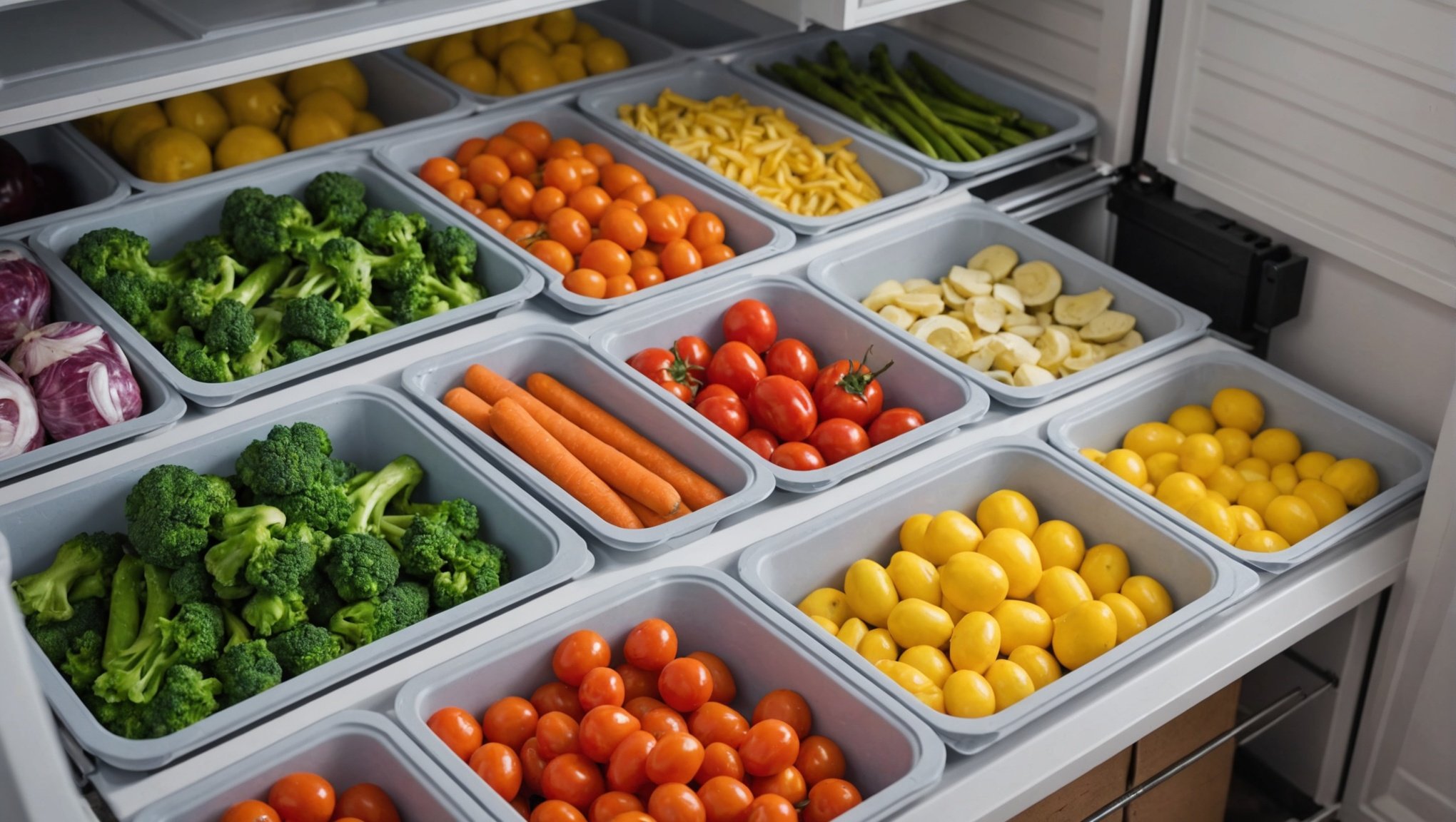Understanding chest freezer temperatures is vital for maximizing food preservation and minimizing waste. Each food variety requires specific temperatures to maintain quality and safety. This guide offers essential tips tailored to different types of foods, ensuring your freezer operates efficiently. Whether you’re storing fruits, meats, or prepared meals, mastering these details can significantly impact your culinary experience and save you money. Let’s explore how to keep your food fresh and delectable!
Understanding Chest Freezer Temperatures
A chest freezer is an essential appliance for preserving food over extended periods. The ideal freezing temperature for a chest freezer is typically around -18°C (0°F). This temperature ensures that food remains safely frozen, reducing the risk of bacterial growth. Maintaining this temperature is crucial for food preservation, as fluctuations can lead to spoilage or freezer burn.
Also to see : Top UV-Resistant Window Treatments to Brighten Your South-Facing Kitchen
It’s a common misconception that colder is always better. Freezing food at temperatures much lower than -18°C doesn’t necessarily extend its shelf life and can increase energy consumption. Thus, setting the chest freezer to the recommended temperature is both energy-efficient and effective for preserving food quality.
Consistent temperatures are vital for food safety. Variations can cause partial thawing and refreezing, which may compromise the texture and taste of food. Regularly checking and adjusting the chest freezer temperature settings can prevent these issues. Investing in a reliable thermometer can help monitor and maintain the correct temperature.
In the same genre : Top UV-Resistant Window Treatments to Brighten Your South-Facing Kitchen
Understanding these temperature settings helps ensure that food remains safe and nutritious. By following these guidelines, you can maximize the efficiency and effectiveness of your chest freezer, ensuring that your food is well-preserved and ready for consumption when needed.
Optimal Temperatures for Different Food Types
Understanding the food storage guidelines for various items is essential for maintaining quality and safety in a chest freezer. Different foods have unique freezing needs to preserve their texture, flavour, and nutritional value.
Meats
Freezing meats properly is crucial to prevent spoilage and maintain quality. Ideally, meats should be stored at -18°C (0°F) or lower. This temperature halts bacterial growth, ensuring that meats like beef, chicken, and pork remain safe for consumption. Be aware that temperature fluctuations can lead to freezer burn, affecting taste and texture.
Vegetables
Freezing vegetables requires a consistent temperature of around -18°C (0°F) to preserve their freshness. Vegetables are sensitive to temperature changes, which can impact their colour and nutritional content. Blanching vegetables before freezing can enhance their quality by deactivating enzymes that cause spoilage.
Dairy Products
Dairy products, such as cheese and butter, have specific food storage guidelines. While they can be frozen at -18°C (0°F), it’s essential to note that not all dairy items freeze well. For example, soft cheeses may become crumbly, while milk can separate. Understanding these differences ensures that dairy products maintain their intended quality when frozen.
Monitoring and Adjusting Freezer Temperatures
Ensuring that your chest freezer operates at the optimal temperature is crucial for food preservation. Temperature monitoring is an essential practice to maintain consistent freezing conditions. A freezer thermometer is a valuable tool for this purpose, providing accurate readings of the internal temperature. Regular checks with a reliable thermometer can prevent unexpected temperature fluctuations.
When it comes to temperature adjustment, knowing how to fine-tune your chest freezer settings is essential. Most freezers have a control dial or digital panel that allows you to set the desired temperature. Adjust these settings carefully to maintain the recommended -18°C (0°F). If you notice the temperature drifting from this range, it may be necessary to recalibrate the controls or seek professional maintenance.
There are several signs that indicate potential temperature issues. If you notice frost build-up, unusual noises, or food that feels soft or has ice crystals, these may signal that the freezer isn’t maintaining the correct temperature. Addressing these signs promptly can prevent food spoilage and energy waste. Regular maintenance and monitoring can help ensure your freezer remains efficient and effective.
Best Practices for Preventing Freezer Burn
Freezer burn is a common issue that affects the quality of frozen food. It occurs when air reaches the food’s surface, causing dehydration and oxidation. This results in dry spots, off flavours, and a change in texture. Understanding how to prevent freezer burn is essential for effective food preservation.
Packaging Techniques
Proper packaging techniques are crucial in preventing freezer burn. Use airtight containers or heavy-duty freezer bags to minimise air exposure. When using bags, remove as much air as possible before sealing. Consider using vacuum sealers for an extra layer of protection. Wrapping food tightly in plastic wrap or aluminium foil can also help shield it from air.
Food Preservation Tips
Implementing effective food preservation tips involves knowing the duration limits for various food types. For instance, meats should ideally be consumed within 6-12 months, while vegetables can last 8-12 months. Labelling packages with the date of freezing helps keep track of storage time, ensuring that foods are used within their optimal timeframe.
By following these practices, you can significantly reduce the risk of freezer burn, maintaining the quality and taste of your frozen foods. These simple steps not only enhance food preservation but also contribute to more efficient use of your chest freezer.
Food Storage Guidelines for Chest Freezers
Effective food storage methods are vital for maintaining quality and safety in chest freezers. Organizing your freezer properly not only preserves food but also enhances food safety by preventing cross-contamination and spoilage.
Proper Packaging Techniques
Proper packaging plays a crucial role in preserving food quality. Removing air from packaging is essential to prevent freezer burn. Use airtight containers or heavy-duty freezer bags, ensuring to expel as much air as possible. Vacuum sealers offer an excellent solution for airtight storage. Wrapping food tightly with plastic wrap or aluminium foil provides additional protection.
Best Shelf Organization Practices
Organizing your chest freezer efficiently can maximize storage space and improve accessibility. Strategically place items to allow for easy rotation, using older items first. Group similar items together, such as meats or vegetables, to streamline retrieval. Consider using baskets or bins to separate categories, making it easier to locate specific foods.
Labelling and Dating Food Items
Keeping track of food inventory is crucial for avoiding waste. Label each package with the date of freezing and contents. This practice helps ensure that foods are consumed within their optimal timeframe, maintaining their quality and safety. By implementing these food storage methods, you can efficiently manage your chest freezer and safeguard the integrity of your food.
Troubleshooting Common Freezer Issues
Understanding chest freezer troubleshooting can help you maintain optimal performance and address any common freezer problems that may arise.
Identifying and Resolving Temperature Fluctuations
Temperature fluctuations can compromise food quality. To address this issue, regularly check the freezer’s thermostat settings. Ensure that the freezer is set to the recommended -18°C (0°F). If fluctuations persist, inspect the door seals for wear or damage, as faulty seals can let warm air in. Additionally, avoid overloading the freezer, as this can obstruct airflow and lead to uneven cooling.
Addressing Excessive Frost Build-Up
Excessive frost build-up is a frequent issue that can affect freezer efficiency. To tackle this problem, ensure the door is closed tightly after each use. If frost continues to accumulate, defrost the freezer periodically. This involves unplugging the unit, removing all food, and allowing the frost to melt naturally. Clean and dry the interior before plugging it back in.
Routine Maintenance Tips for Optimal Performance
Routine maintenance tips are essential for keeping your chest freezer in top condition. Regularly clean the freezer coils to enhance energy efficiency. Check the door seals for any signs of wear and replace them if necessary. By following these simple steps, you can ensure your freezer operates efficiently and effectively.
Benefits of Maintaining Proper Freezer Temperatures
Maintaining proper freezer temperatures is crucial for ensuring the quality and longevity of your stored food. One of the primary benefits is the positive impact on food quality and taste. When food is kept at the recommended -18°C (0°F), it retains its original texture, flavour, and nutritional value, making meals more enjoyable and nutritious.
Another significant advantage is the reduction in food waste through effective storage. By keeping your freezer at the correct temperature, you can prevent spoilage and freezer burn, which often leads to discarding otherwise edible food. This not only helps in conserving resources but also contributes to a more sustainable household.
Financial savings are a compelling reason to maintain proper freezing practices. By avoiding spoilage, you spend less on replacing wasted food. Additionally, a well-functioning freezer operates more efficiently, potentially lowering energy bills. Over time, these savings can add up, providing a tangible financial benefit.
In summary, the benefits of proper freezing extend beyond just preserving food. They encompass enhanced food quality, reduced waste, and financial savings, making it a worthwhile practice for any household. By adhering to these guidelines, you ensure your freezer serves its purpose effectively and economically.
Frequently Asked Questions
When it comes to chest freezer FAQs, there are several common concerns that users often have, particularly regarding food safety questions. Addressing these can help ensure your chest freezer operates efficiently and safely.
Addressing Common Myths About Chest Freezers
A prevalent myth is that colder temperatures always equate to better food preservation. However, maintaining the recommended -18°C (0°F) is optimal for food safety and energy efficiency. Lower temperatures do not necessarily extend food shelf life and can increase energy consumption.
Tips for Defrosting and Cleaning a Chest Freezer
Regular defrosting is vital to prevent excessive frost build-up, which can hinder performance. To defrost, unplug the freezer, remove all food, and allow frost to melt naturally. Clean the interior with a mild detergent and dry thoroughly before reloading food. This routine helps maintain efficiency and hygiene.
How to Handle Power Outages and Food Safety
During power outages, keep the freezer door closed to maintain the internal temperature. A full freezer can keep food frozen for approximately 48 hours. If the outage persists, use dry ice to prolong the cold. Once power is restored, check each item for signs of spoilage to ensure food safety.
Visual Aids for Understanding Freezer Temperatures
Visual aids such as charts and infographics can be incredibly helpful for grasping the complexities of freezer temperature management. These resources provide a clear and concise way to understand and implement temperature guidelines effectively.
Suggested Charts for Ideal Freezing Temperatures
Charts are valuable tools for quickly referencing the ideal freezing temperatures for various food types. They often display temperatures in both Celsius and Fahrenheit, making it easy to set your freezer accurately. A well-designed chart can highlight the recommended -18°C (0°F) setting and illustrate the potential impacts of deviating from this standard.
Infographics on Food Storage Timelines
Infographics provide a visual representation of food storage timelines, helping you understand how long different foods can be safely kept in a chest freezer. These infographics often include colour-coded sections that differentiate between food categories like meats, vegetables, and dairy products, offering a quick reference for optimal storage durations.
Resources for Further Reading and Visual Learning
For those seeking to expand their knowledge, numerous visual resources are available online. These may include interactive infographics and detailed charts that delve deeper into the science of freezing. Such resources are excellent for anyone looking to enhance their understanding of freezer management and food preservation.






